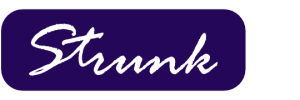Managing Fee Waivers and Refunds
As the end of the year approaches, we have seen more and more clients loose potential additional fee income by waiving or refunding customer OD/NSF fees. This is often lost income potential that is unknown to the institution. Generally most systems are set up to charge fees after the pay/return decisions have been made, so if the fees are waived the income never shows up on the general ledger as either income or the subsequent reversal of income. Besides the reduction of fee income, waiving or refunding OD/NSF fees can also be a compliance issue. Regulators have become increasingly sensitive to which accounts are not being held accountable for the fees that their activity dictates should be charged. For instance, if a high net worth individual is not charged overdraft (or other) fees that other accounts are routinely charged, this may be viewed as disparate treatment with all the ramifications that allegations of that nature involve.
The best solution to help alleviate both of these issues is to charge the fee “the night before”, or when the overdraft transactions are presented rather than waiting until the resolution of all items to post the fee. This helps accomplish the reduction in fee income simply because it requires more than a “click” to waive a fee, but rather a refund would need to be run for the reversal of the fee. This also allows for easier tracking of what is being given back to your account holders. With the gross fees as well as the individual refunds posting to the general ledger you can see at any given time how much the institution is giving away in fee income. From a compliance standpoint the institution is charging everyone on an equal basis – if an item overdraws the account then the account is charged – but the officer still has the discretion to refund the fee after the fact. This method is much more trackable and provides much more accountability for fee refunds.
Many of our clients cannot tell how much income they are giving back to customers each month. Part of the issue is addressed above regarding how to account for your fees and the associated waives, but the other issue is simply employees refunding fees back to customers when they ask for it, or sometimes even without them asking for it. In addition, very few institutions take the time to build reports, examine those reports, and hold their employees accountable on a consistent basis.
To assist in managing fee refunds, Strunk recommends that you implement the use of a “Refund Request Form” for employees to provide customers when they request a refund. This accomplishes multiple things. First, it allows the employee to avoid the face-to-face confrontation and having to make a snap decision. Second, it puts the emphasis for refunds back on the customer to show why it should be granted. This does not mean that we will no longer grant refunds, but we would like the customer to have to provide a valid reason why the institution should consider granting the request.



